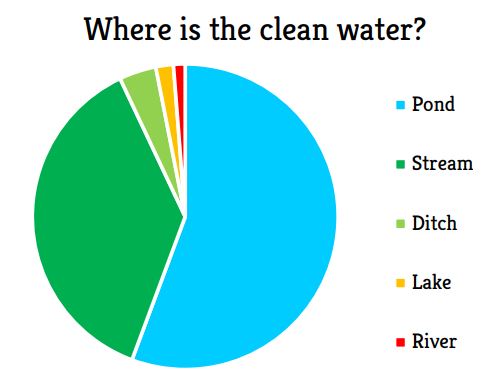Freshwater habitats of the New Forest
22 August 2018
The New Forest is a world class freshwater landscape . It may not be obvious – wetlands are probably not the first thing to come to mind when you think of the New Forest – but this National Park can indeed rival famous freshwater landscapes around the world.
What makes the New Forest different to other parts of the UK is the clean water, a result of the high quality habitats, free from the pollution that comes with intensive land use. The heathland, woodland, grassland, and mire that surrounds the ponds, rivers, streams and ditches is, importantly, maintained by traditional and extensive grazing. There are few sources of pollution, so the water remains clean. And where there is clean water, there is an abundance of wildlife.

Step into the National Park, and immediately you are in a very different kind of place.
In 2016, volunteers tested 675 water samples from ponds, streams, rivers, lakes and ditches in the Park .
An amazing 74% showed no sign of nutrient pollution. Most of that clean water was found in ponds.

Over 1,000 ponds are dotted across the New Forest, within the woodlands, heaths, grasslands and floodplain meadows. And there are many thousand more transient trackway and bog pools. Together, they provide incredible freshwater habitats with exceptional wetland plant and insect communities. Unrivalled in terms of their quality and quantity, they are home to some of our most endangered plants and animals.
Take, for instance, the Tadpole and Fairy Shrimps. These fascinating crustaceans love the seasonal ponds of the Forest. When the ponds dry out, potential predators and competitors die off, but the shrimps remain, hiding as drought-proof eggs in mud. When the rains return, the shrimps quickly develop and grow, in a race to breed and lay more eggs before the ponds dry up again and the cycle repeats. The Fairy Shrimp is found in a handful of sites outside the Forest, but the Tadpole Shrimp is know from only one other site, making the New Forest a very special place indeed.

Fairy Shrimps love the pony-grazed and trampled ponds of the New Forest. Photo credit: Naomi Ewald/Freshwater Habitats Trust
Other treasures of the New Forest include Tubular Water-dropwort, Lesser Bladderwort, Marsh Clubmoss, Coral Necklace and Pillwort. What they all have in common is the need for clean water. Once much more widespread, they are now restricted to places like the New Forest, and nowhere else are they so widespread and safe.

Coral Necklace is a rare flowering plant that grows in grazed seasonal ponds. Although it is now restricted to just a few sites in southern and south-west England, it is abundant in the New Forest. Photo credit: Naomi Ewald/Freshwater Habitats Trust
The New Forest is a memory of what great swathes of the country were once like. It’s a landscape very dear to our hearts here at Freshwater Habitats Trust.
By Becca Williamson
Communications officer at the Freshwater Habitats Trust.

